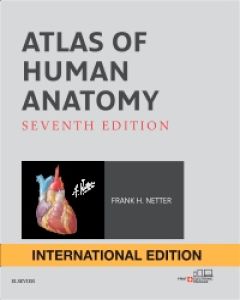

We also want to thank Alexa Doig who took a few of the cadaver photographs.Netter's Atlas of Human Anatomy is the most loved and best selling anatomy atlas in the English language. Also, the following individuals each contributed one or two dissections, and we want to thank them for their contribution: Richard Homer, Torrence Meyer, Jordan Barker, Jon Groot, and John Dimitropoulos. Nathan Mortensen played a major role in helping with the dissections throughout the pages of this book. Good dissection is a time consuming task that requires a strong knowledge of anatomy, skill and dexterity, and above all a lot of patience. To learn more about Real Anatomy, visit In conclusion we would like to thank a few individuals for their help with the dissections that were photographed for this book.

Students can continue their exploration of anatomy using Real Anatomy, 3-D imaging soft ware that enables students to dissect through layers of the real human body. Even the layperson who wants to learn more about their amazing body can benefit from the beautiful anatomy images throughout the book. On the other hand, because it is dissection based the book is also an excellent reference for the medical student, physical therapy student, or other graduate student who is studying cadaver anatomy from a regional approach. Each chapter illustrates the concepts and features of a body system and depicts those features with clear dissections and reference images of the dissections. Th e chapters are constructed with a systematic approach to anatomy to meet the needs of the typical undergraduate anatomy course. It has also been our goal to create a book that will benefit students at all levels of anatomy education. Th e few words that accompany the images in the book draw attention to the patterns and the basic structure-function relationships of the dissections and micrographs. We attempt to show these patterns in our presentation of anatomical structure throughout the chapters of this book. There are many simple patterns of design that organize and clarify the structure of the vertebrate body. Each dissection was made with an instructive purpose and reference images are used to highlight and focus on the patterns or concepts depicted by the dissections. Of this book is to present images that teach, and not just showcase a plethora of anatomy. We believe that good dissection and photography can be instructive, especially when creatively coupled with teaching concepts.
#Atlas of human anatomy pdf elsevier license
While it is true that the artist has much more creative license than the dissector, it is also true that a lot of anatomical art does not always accurately depict what is actually observed by a dissector or for that matter, a surgeon in a clinical setting. We oft en hear that photographs can never clarify and teach anatomy as well as art. In this book we provide you with the images of real anatomy, with the hope that this will help you better visualize the words of anatomy.

We believe that every word that has ever been written about anatomy is the result of someone describing what they observed in a dissection (or as is the case of many authors today, the words are paraphrased from somebody else’s knowledge and writings about dissection). Anatomy is a visual science, and in no other subject does the age-old saying ring so true - “a picture is worth a thousand words.” With this in mind we created this book to teach anatomy with the real thing - photographs of cadaver dissections and the bones of the skeleton, and micrographs of the body’s tissues.


 0 kommentar(er)
0 kommentar(er)
